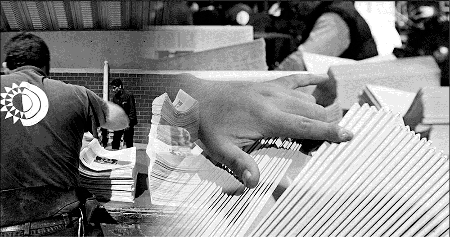La Jornada – US Recession: Yes, No, Maybe

Predictions of a possible recession in the United States have become a “Sicilian” dilemma.
What some specialists confirm one day about the possibility of its occurrence, the next day they correct their suspicion, and the next day they say that in fact it really exists.
An article on this topic was recently published in the Business section of The New York Times. (Ben Castleman, 6-7/22)
Perhaps it can help non-specialists in economic matters, if not to fully understand this phenomenon, at least to clarify a little doubt that it raises.
The article explains that a recession occurs when a country’s gross output falls for at least two quarters, in addition to a significant increase in unemployment and high inflation. In the absence of one or two of these factors, it is doubtful that there will be a recession.
The semi-official body that explains this phenomenon in a certain way is the National Bureau of Economic Research (NBER).
One of her limitations is that, given the complexity of her investigations, her opinion is revealed six or 12 months after the recession begins.
Instead, the financial sector, the commercial sector, and of course the central bank, have other means and ways to determine if a recession is present.
Often, at different times, they develop their predictions of the moment a recession is brewing, as well as its depth and extent, despite the inaccuracies that characterize those of the NBER.
Also among some economists there are differences to determine whether there is or not. And as if this were not enough, in every media there are specialists who provide information and analysis in this regard.
All this makes it more difficult to know when and how this phenomenon affects the economy and, most importantly, society in general.
In the end, for large segments of the population, what is necessary is not the technical definition of a recession or when it begins or ends, but the way in which daily subsistence harms their families, due to the high prices of food, housing and transportation.
In this sense, the differences between the different economic classes acquire vital importance in the deeper sense of the term.
In a recent article on the famine affecting millions of families in the United States, the damage that inflation inflicts on those who live “from day to day” is described.
It highlights the destitution conditions of those who work in services, agriculture, and commerce, many of whom are immigrants from southern Rio Grande, who also lack housing, in a city with the state’s exclusive vacation center from Utah.
The contrast with the extravagance of the homeowners, who spend their holidays there, is overwhelming. Needless to say, the problem is not limited to that place.
The discrepancy becomes even more dramatic when a shortage process, like the current one, has repercussions in increasing the prices of basic products.
Its impact on health, education and, in general, the standard of living in the most vulnerable sectors is cumulative and its consequences are becoming increasingly difficult to overcome.
The photo illustrating the article in the reference shows the misery of what they euphemistically call “housing,” which is nothing more than a tarp on which they pile up to sleep and half to eat, or the astronomical growth of improvised vehicles as lodging for those on which whole families sleep, due to the paucity and high cost of housing. ( The New York Times 7/8/22)
In short, notions of inflation and stagnation are meaningless for the poor, because, like millions around the world, they have lived in perpetual stagnation their whole lives.
The cruel irony is that when recovery, economic prosperity, and progress come, they are almost always pushed away, and their shortcomings are often highlighted.

“Coffee fanatic. Gamer. Award-winning zombie lover. Student. Hardcore internet advocate. Twitter guru. Subtly charming bacon nerd. Thinker.”







:quality(70)/cloudfront-us-east-1.images.arcpublishing.com/elfinanciero/YDG4472QRJGMPHNKW6S4XD76GI.jpeg)

/cloudfront-eu-central-1.images.arcpublishing.com/prisa/X33WQ3GSYFF3DBKJDAVIGHN3DA.jpg)

